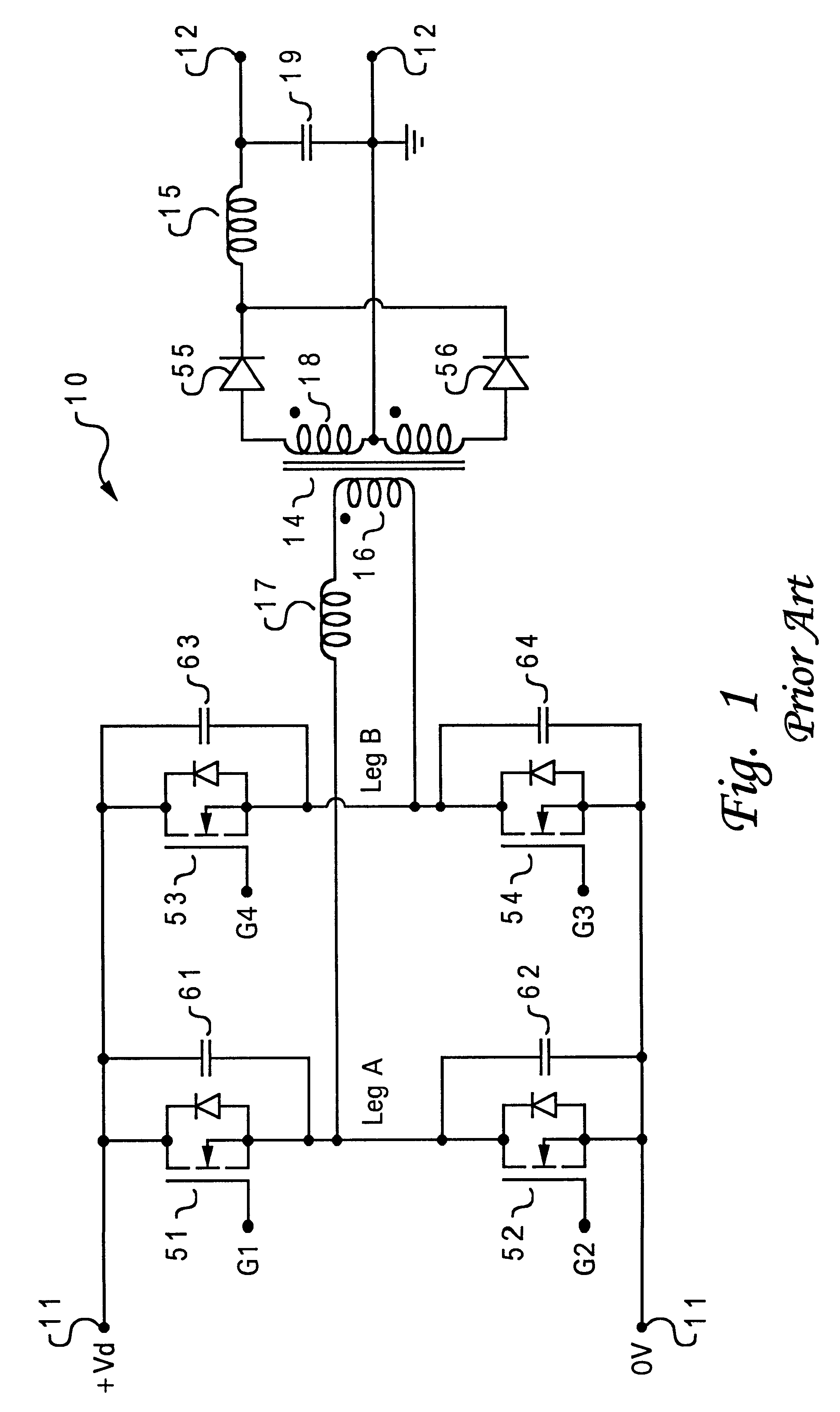Full-bridge DC-to-DC converter having an unipolar gate drive
a technology of unipolar gate drive and dc-to-dc converter, which is applied in the direction of dc-dc conversion, power conversion system, oscillation generator, etc., can solve the problems of increased switching loss, reduced load, and reduced efficiency
- Summary
- Abstract
- Description
- Claims
- Application Information
AI Technical Summary
Problems solved by technology
Method used
Image
Examples
Embodiment Construction
With reference now to FIG. 2, there is illustrated a block diagram of a computer power supply in which a preferred embodiment of the present invention is incorporated. As shown, a computer power supply 20 includes an alternate current (AC) filter and diode bridge 21 to convert a, for example, 200 VAC input to a full-wave rectified AC. A power factor corrected (PFC) boost 22 then converts the full-wave rectified AC to a, for example, 400 V regulated direct current (DC). The regulated 400 VDC is then distributed to various power supplies and regulators, as needed. In FIG. 2, the regulated 400 VDC is distributed to control and auxiliary supplies 23 for providing a 12 VAC and a 5 VDC, to a full-bridge DC-to-DC converter 24 for providing a 1.5 VDC, to a full-bridge DC-to-DC converter 25 for providing a 2.5 VDC, and to a peripheral M device supply 26 for providing a .+-.12 VDC, a 5 VDC, and a 3.3 VDC.
Referring now to FIG. 3, there is illustrated a circuit diagram of a full-bridge DC-to-DC...
PUM
 Login to View More
Login to View More Abstract
Description
Claims
Application Information
 Login to View More
Login to View More - R&D
- Intellectual Property
- Life Sciences
- Materials
- Tech Scout
- Unparalleled Data Quality
- Higher Quality Content
- 60% Fewer Hallucinations
Browse by: Latest US Patents, China's latest patents, Technical Efficacy Thesaurus, Application Domain, Technology Topic, Popular Technical Reports.
© 2025 PatSnap. All rights reserved.Legal|Privacy policy|Modern Slavery Act Transparency Statement|Sitemap|About US| Contact US: help@patsnap.com



